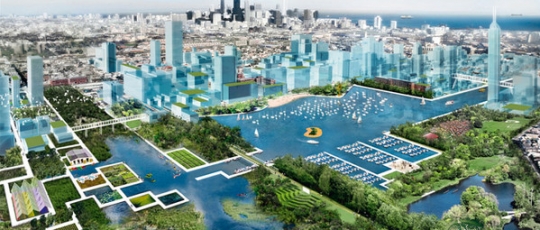
Five things that smart cities are already doing that you may not know
Posted on October 19, 2015 by TheStorageChap in Big Data and Analytics, Internet of ThingsContinuing growth of the world’s population is projected to add 2.5 billion people to urban areas by 2050, with nearly 90 per cent of the increase concentrated in Asia and Africa. In addition, the proportion of the globe’s population living in urban areas is expected to rise, reaching 66 per cent by 2050.
This growth brings immense pressure on countries around the world to do more with less, particularly within towns and cities. The need to innovate and run with greater efficiency has never been more important. And, given that the online, connected population is expected to reach five billion by 2025, developing connected, smart cities to support these people is high on the agenda.
From urban policy and planning, to implementing smart lighting and improved services for schools, there’s a lot to think about and contend with. But, this is where digital technology, big data and the Internet of Things have a big role to play. And, some cities are already realising this.
Here, we look at five areas of innovation in Smart Cities around the world:
- Urban and policy planning – Many Nordic cities are consolidating and anonymizing huge amounts of public sector data such as tax details to better inform housing benefits and zoning. This kind of data can also indicate where schools are needed, high crime areas and possible mitigation strategies and traffic congestion areas, where improved public transport links are required. For example, Copenhagen City launched its ‘Copenhagen Connecting’ (CC) project to deliver better and faster on its goals through intelligent use of data.
- Waste Management – Milton Keynes in the UK is now using smart wheelie bins that send messages to rubbish collectors when they are full. And, they even link up to intelligent routing systems to help the collectors get there in quicker time. As the first project of its kind in the country, these connected sensors are designed to not only make lives easier for residents, but improve waste management efficiency, reduce the cost of waste collection against conventional pick-up rotas and of course, keep streets clean.
- Smart lighting – Now known as the Dutch “city of light”, Eindhoven is using a pioneering LED lighting system that can switch on and off as people and vehicles move around. It is driven by computers wirelessly connected to sensors that detect movement and they can then instruct appropriate action to be taken. This intelligent system helps conserve energy and reduce CO2 emissions, boosting the city’s green credentials. It can also detect and alert people to expected extreme weather conditions. For example, street lights can flash red to warn residents of approaching storms or floods.
- Intelligent Emergency Services – EMC’s Said Tabet recently spoke about how innovative cities in Ireland are transforming emergency services. Using sensors to detect approaching emergency vehicles, which then send signals to immediately turn traffic lights red, provide a quicker and safer path for emergency vehicles to pass – helping to save lives. Following recent investment, Ireland is also going to become a hub for Internet of Things research. Using a new platform, businesses will be able to test solutions for the Internet of Things in manufacturing, fleet management, machinery, household appliances and even clothing.
- M2M for fleet and traffic management – Deutsche Telecom is working in Hungary to overhaul the fleet management industry. It is providing solid network and infrastructure for cars to work out the best routes for deliveries in real-time. These networks, based on M2M can help eliminate downtime, deliver packages faster and boost customer satisfaction.
As these examples show, big data, analytics and the Internet of Things are vital when it comes to making smart cities a reality. Using technology that’s able to connect people, places and things instantly not only enhances efficiency and improves public services, but makes our daily lives easier and more enjoyable.
But in order to deliver on the whole vision of a smart city or town do you need to literally start from the ground up? I’d be interested to hear your thoughts on this. Please do share any interesting smart city use cases you are aware of in the comments below.
Discussion · No Comments
There are no responses to "Five things that smart cities are already doing that you may not know".No one has posted a comment on this post yet. Start the discussion!
Leave a Comment